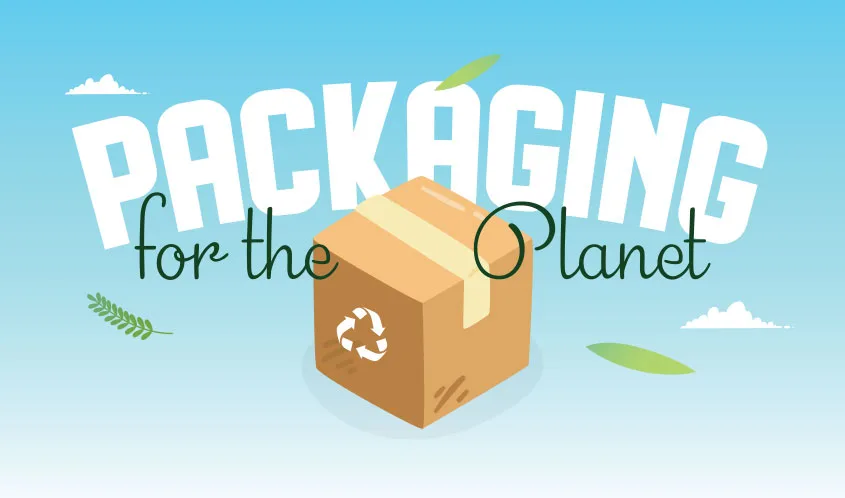Toy companies explore sustainable alternatives for packaging.
There’s no question about it: Sustainability has become one of the most prevalent topics in today’s marketplace. Eco-friendly initiatives and actions are up for discussion on social media, at protests, and on the political debate stage.
According to last year’s Computer Generated Solutions (CGS) U.S. Consumer Sustainability Survey, 68% of consumers rate sustainability as an important factor in their purchases. While toys don’t yet rank as one of the top-five categories that consumers consider most critical for eco-friendly options, the industry is far from immune to this trend. At Toy Fair Dallas, sustainable toys and packaging were prevalent, with the trend expected to pick up steam this year and beyond.
Green toys, recycled materials, and other sustainable initiatives in the toy industry certainly aren’t new, but the second half of last year brought an especially high number of packaging-focused sustainability efforts from some of the biggest names in play. LEGO added to its list of eco-friendly actions by deciding to eliminate plastic shopping bags in its retail stores — with the promise of more announcements on the way this year — while Hasbro, MGA Entertainment, and Mattel all revealed plans to move toward sustainable packaging.
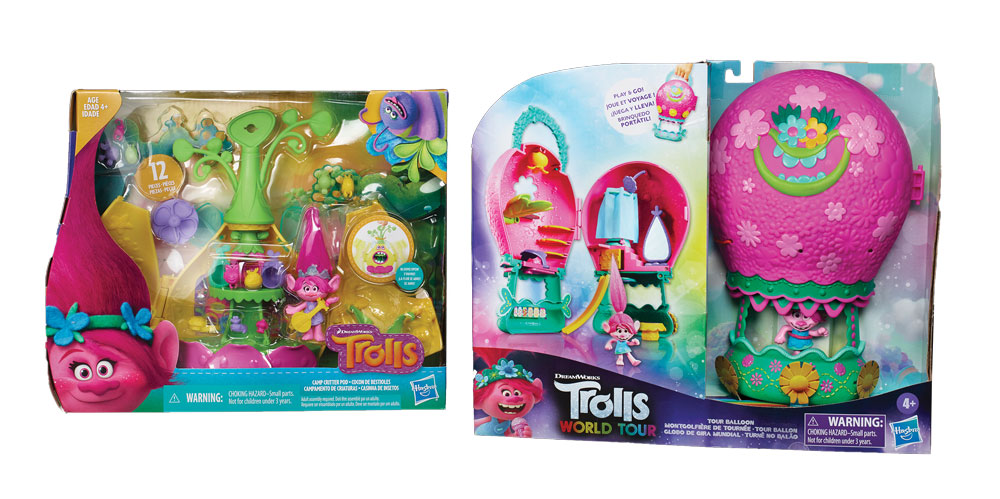
Why Support Sustainability?
Despite the many conversations around packaging waste, toys make up less than 1% of the typical household waste stream, according to The Toy Association’s official statement on packaging and sustainability. Al Kaufman, The Toy Association’s senior vice president of technical affairs, says the public perception that toys contribute a higher volume of waste comes from what he calls the Christmas-morning effect.
“Kids open up their toys, all of the gift opening is done, and then the parents look at this huge pile of packaging in front of them and get the impression that toys are overly packaged,” he explains. However, despite toys’ relatively small waste impact, Kaufman and The Toy Association both fully support sustainable packaging efforts.
“I think it’s important for everybody to do their part,” Kaufman says. “I think every industry — large and small, whatever their impacts are — [has] a responsibility to do everything that it can to lessen the impact of their product. … We want to be good corporate citizens and good citizens of the world and do what we can to minimize our impact.”
Many other toy companies share this sentiment, expressing a desire to set a good example for the next generation and to help ensure that kids can grow up on a better, cleaner Earth.
In addition to moral motivations, there are also business-oriented incentives for embracing sustainable packaging. Kathrin Belliveau, senior vice president of government affairs and corporate social responsibility at Hasbro, explains that as more consumers prefer to shop sustainably, regulators and retailers respond by requiring companies to reduce single-use plastic in their packaging. This means that toy companies must look toward sustainability in order to stay competitive.
Goodbye, Plastic
When it comes to actually producing sustainable packaging, toy companies have options. Hasbro, for example, plans to remove virtually all plastic from its new product packaging, starting this year and finishing by 2022. There will be a few minor exceptions to this, such as Easy-Bake food packaging, some storage containers, tape, glue, and stickers. In place of polybags, elastic bands, shrink-wrap, window sheets, and blister packs, Hasbro will switch to open packaging in some cases and replace the plastic with either paper or alternative materials in others.
“Our in-house packaging team is continually innovating, testing, and validating new materials; exploring new solutions; and developing best practices to improve the sustainability of our products and packaging,” Belliveau says.
MGA Entertainment (MGAE) CEO Isaac Larian announced in November that the popular L.O.L. Surprise! unboxing dolls — which feature multiple surprise layers for kids to unwrap — will also switch to paper and sustainable materials. Consumers can already recycle the L.O.L. Surprise! wrapping, dolls, and accessories through MGAE’s program with TerraCycle, but these new sustainability efforts will make it even easier to recycle the packaging. Larian says this transition will roll out across L.O.L. and other MGAE products this year.
He also says that this packaging change won’t impact the unboxing experience kids enjoy with L.O.L. Surprise! “If the experience changes, it will be because our fans are wanting something different,” he says. Larian even hints at plans for biodegradable toys on the way from MGAE in the second half of the year.
Switzerland-based construction toy company Geomagworld is also making a big move toward sustainability this year, launching a full green line for consumers in June. The packaging in this line includes cardboard boxes made up of more than 70% recycled materials and 80% regenerated PET containers. The products themselves are sustainable, too, made with 100% recycled plastic.
“Some cynics might question our motive for such a move — are we jumping on a bandwagon or finding an ‘on trend’ new toy category?” says Nikki Jeffery, senior marketing consultant at Geomagworld. “Our answer to that would simply be, ‘no,’ and this is something we couldn’t be any clearer on. Geomagworld has always been — and will continue to be — committed to all of our social and environmental responsibilities.”
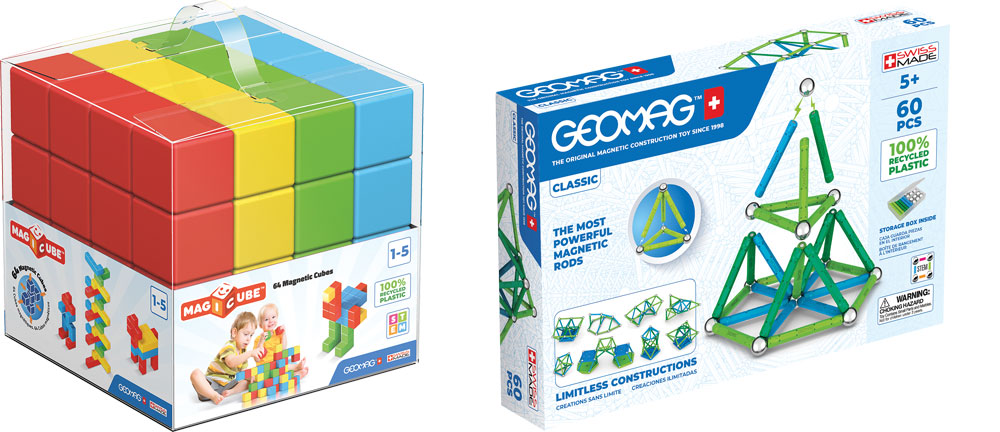
The Cost of Going Green
Moving to sustainable packaging materials may seem like a no-brainer, but there are some difficulties and downsides to making the switch. In the case of open packaging, in-store theft is a major concern. And replacement materials — such as PET and sustainably sourced paper — are more expensive and can require new manufacturing equipment or molds.
According to CGS, about 35% of consumers will pay 25% more for sustainable products. However, it can be harder for small- and medium-sized toy companies to swallow the costs associated with redoing their packaging. The Toy Association knows this and offers all of its members a Smart Packaging Initiative Tool.
The tool separates toys by category, asks retailers questions about the toys’ packaging, and gives the packaging a score from 0-100 (with 100 being the best). Manufacturers can see how their packaging scores compare to the industry median score in that category, get suggestions about how to improve the packaging, and try out several different designs. Kaufman says this can really help companies that don’t have the resources to do this in house. He also thinks the tool will have a positive impact as companies work to improve their scores to reach industry standards.
“That median score is going to go up as all people work to try to improve their scores,” he says. “So it’s a moving goal, and it sort of drives continuous improvement, which I think is also an excellent part of the tool.”
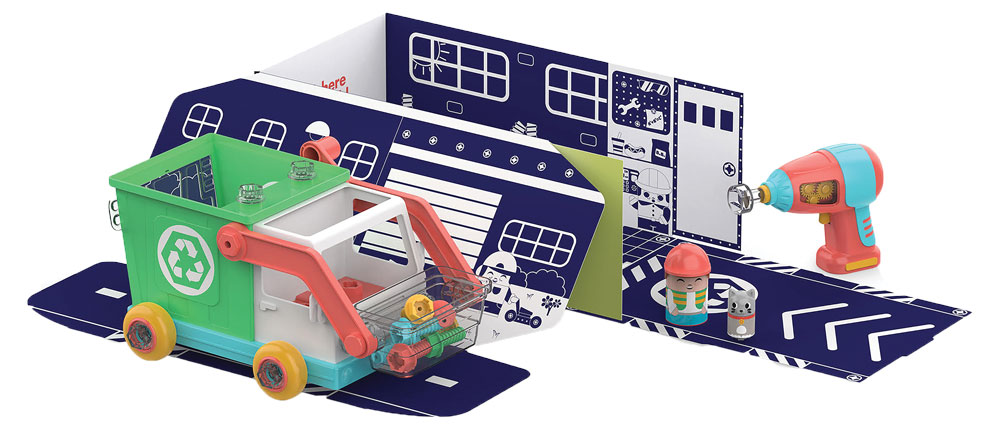
Packaging = Play
In addition to replacing plastic packaging with sustainable materials, some companies are opting to make their packaging part of the toy’s play pattern to completely eliminate waste. One example of this is Educational Insights‘ new Design & Drill Bolt Buddy line. The toy itself is a character or vehicle that preschoolers can assemble, but each box folds out to become a color-me playset.
Heather Weeks, director of product development at Educational Insights, says it is important for toymakers to be mindful of details like this. “Incorporating packaging into the play is one more way to spark a child’s imagination, and in the process take a step toward being a responsible steward for our planet,” she says. “As adults, we set the example. Children may not always appear to listen, but in actuality, they are watching very closely.”
Educational Insights’ Director of Marketing Lori Mannion says the only downside to incorporating the packaging into play is making sure that parents and kids notice the extra layer instead of throwing it away out of habit.
“This is a great teachable moment between parents and kids, to take care of the box and reuse it over and over again. …” she says. “We always joke that the kids get so many toys for Christmas and their favorite thing ends up being the cardboard box. We’ve taken that insight to the next level.”
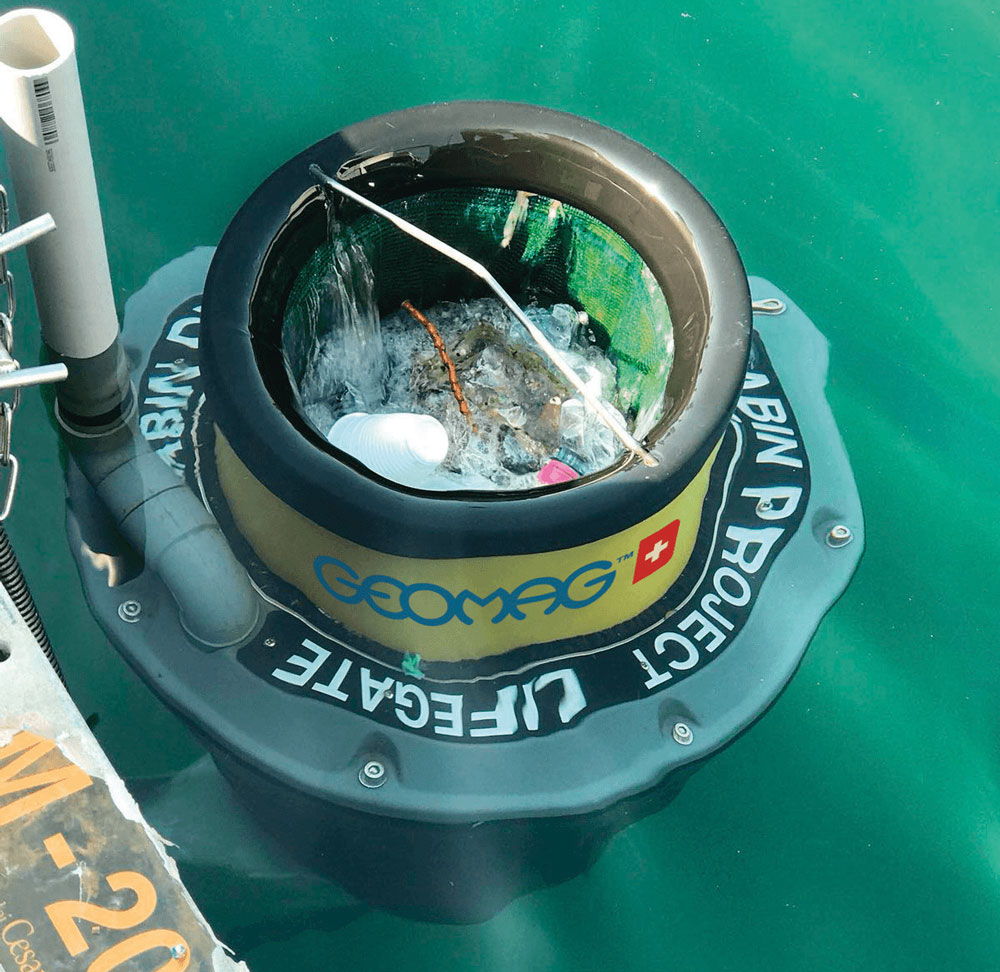
Beyond Packaging
There are, of course, other sustainable efforts throughout the toy industry that go beyond packaging. Some companies, such as MGAE, are moving toward biodegradable toys. Others, including Mattel, have introduced recyclable, bio-based plastic toys, such as the new Mega Bloks sets. Educational Insights, meanwhile, aims to disrupt the idea that toys only have a lifespan of a year or two, offering some of the same toys for more than 15 years.
“These toys become heirlooms that are passed down from sibling to sibling and parent to child,” Weeks says. “There is a cycle of play here that we believe is a responsible way of creating toys. No one wants to create product that they feel is quickly destined for a landfill.”
Geomagworld takes things even further in its efforts to help reduce toys’ environmental impact, working with LifeGate PlasticLess to fund a Sea Bin in Marina degli Aregai, Italy. While the material caught in the bin doesn’t directly become Geomagworld products, the device collects around 500 kilograms (about 1,102 pounds) of debris from the water each year.
“We are very aware that what [Geomagworld is] doing is only really going to have a minimal impact on the overall environmental crisis our planet is currently facing,” Jeffery says. “But if we, as a relatively minor player in the market, can make these small but significant changes, imagine the impact if, as an industry, everyone did something! I am sure both our kids and our planet would appreciate it.”
This article originally appeared in the February 2020 issue of the Toy Book. Click here to read more!

